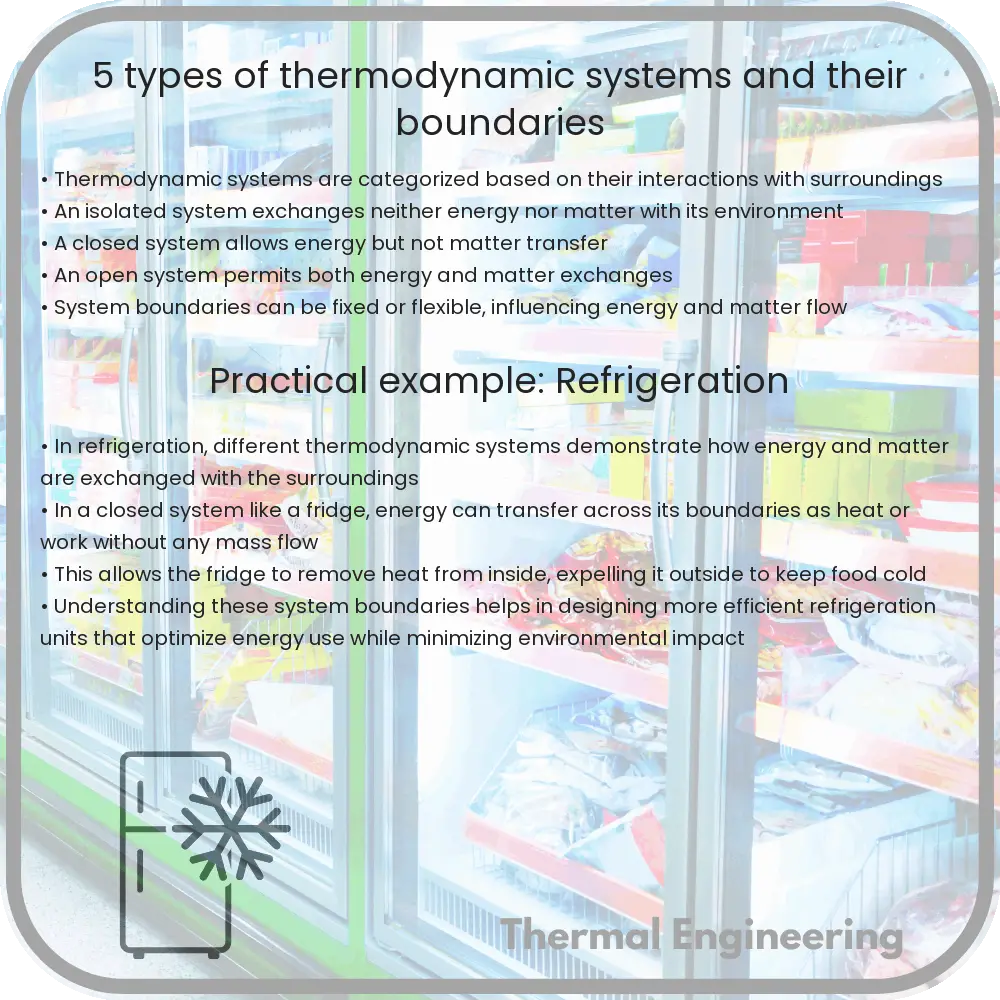Learn about thermodynamic systems, their types, and boundaries essential for energy and matter exchange in engineering.

Understanding Thermodynamic Systems and Their Boundaries
Thermodynamics is a fundamental branch of physics and engineering that deals with the study of energy transfer and transformations. A thermodynamic system is typically defined by its mass or volume, composition, energy, temperature, and pressure. These systems are classified based on how they exchange energy and matter with their surroundings. Understanding the types of thermodynamic systems and their boundaries is crucial for analyzing and designing various engineering processes and devices. Here, we explore five primary types of thermodynamic systems and the nature of their boundaries.
1. Open Systems
An open system can exchange both energy and matter with its surrounding environment. This type of system is commonly observed in engineering applications such as boilers, turbines, and radiators. For example, in an internal combustion engine, fuel and air enter the system, undergo combustion, and then exit in the form of exhaust gases. The boundary of an open system usually includes physical gates or ports that allow the transfer of mass in and out of the system.
2. Closed Systems
Closed systems allow the exchange of energy (such as heat and work) but no exchange of matter with the surroundings. An example of a closed system is a sealed flask of water placed on a heater. Energy in the form of heat can enter the system through the walls of the flask, raising the temperature and possibly changing the state of the water, but no water can enter or leave the flask. The boundaries of a closed system are typically impermeable to matter.
3. Isolated Systems
An isolated system does not exchange either energy or matter with its surroundings, making it the most restrictive type of thermodynamic system. A good theoretical example of an isolated system is a perfect thermos bottle, which neither gains nor loses heat and allows no matter transfer in or out. In reality, perfectly isolated systems do not exist, but they are a useful ideal for theoretical discussions in thermodynamics.
4. Adiabatic Systems
An adiabatic system is a specific type of closed system that does not exchange heat with its surroundings, although it can exchange work. One real-world example is an insulated piston in which gas is compressed or expanded. If the insulation is perfect, no heat will be lost or gained during the process, and any changes in the internal energy of the gas are due to work done by or on the system. The boundary of an adiabatic system is ideally thermally insulating.
5. Control Volumes
The concept of a control volume applies primarily in fluid dynamics and refers to a volume in space through which fluids (liquids or gases) may flow. This type of system boundary can be both real and imaginary and may change shape and size. A typical example is the air passing through the turbine of a jet engine. The boundaries of a control volume are defined by the area through which fluids enter and exit the system, making it similar to an open system but more flexible in terms of shape and size. The analysis of control volumes is crucial in the study of fluid dynamics and related calculations.
Each type of thermodynamic system and its boundaries helps scientists and engineers determine the behavior and efficiency of processes in various fields of technological application. By understanding the fundamental properties and restrictions associated with these systems, it becomes easier to apply engineering principles to optimize performance and solve practical challenges effectively.